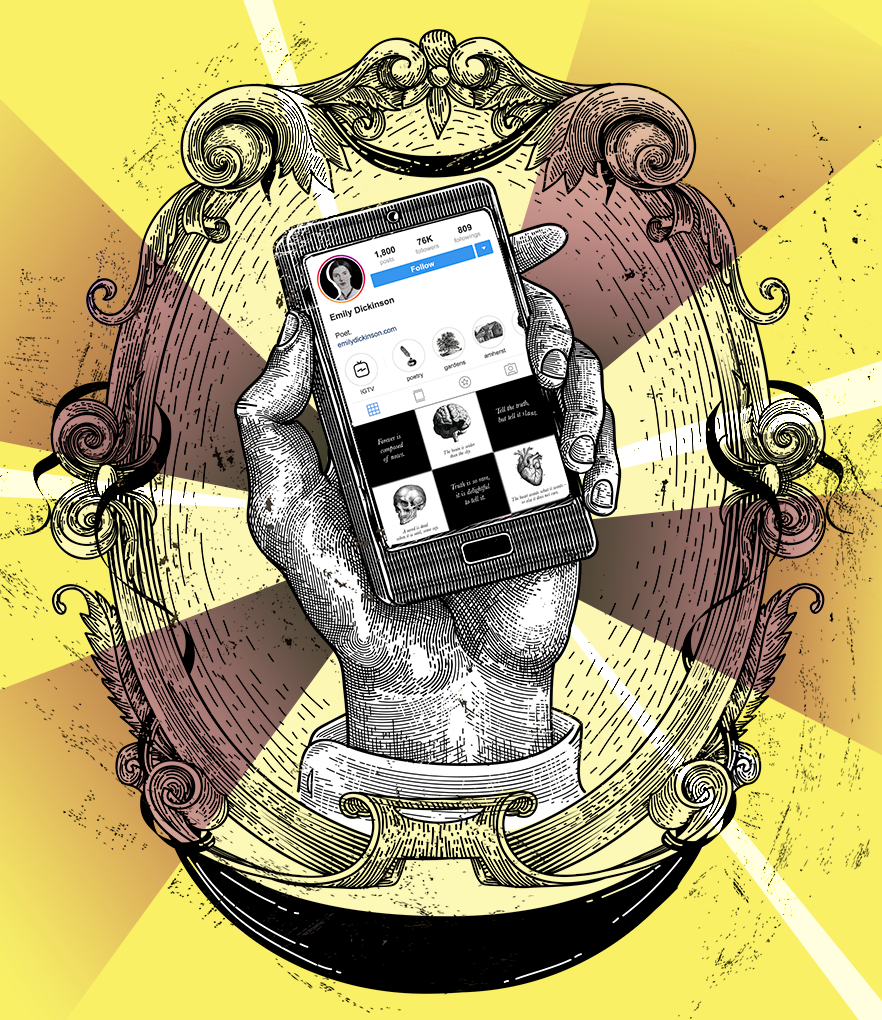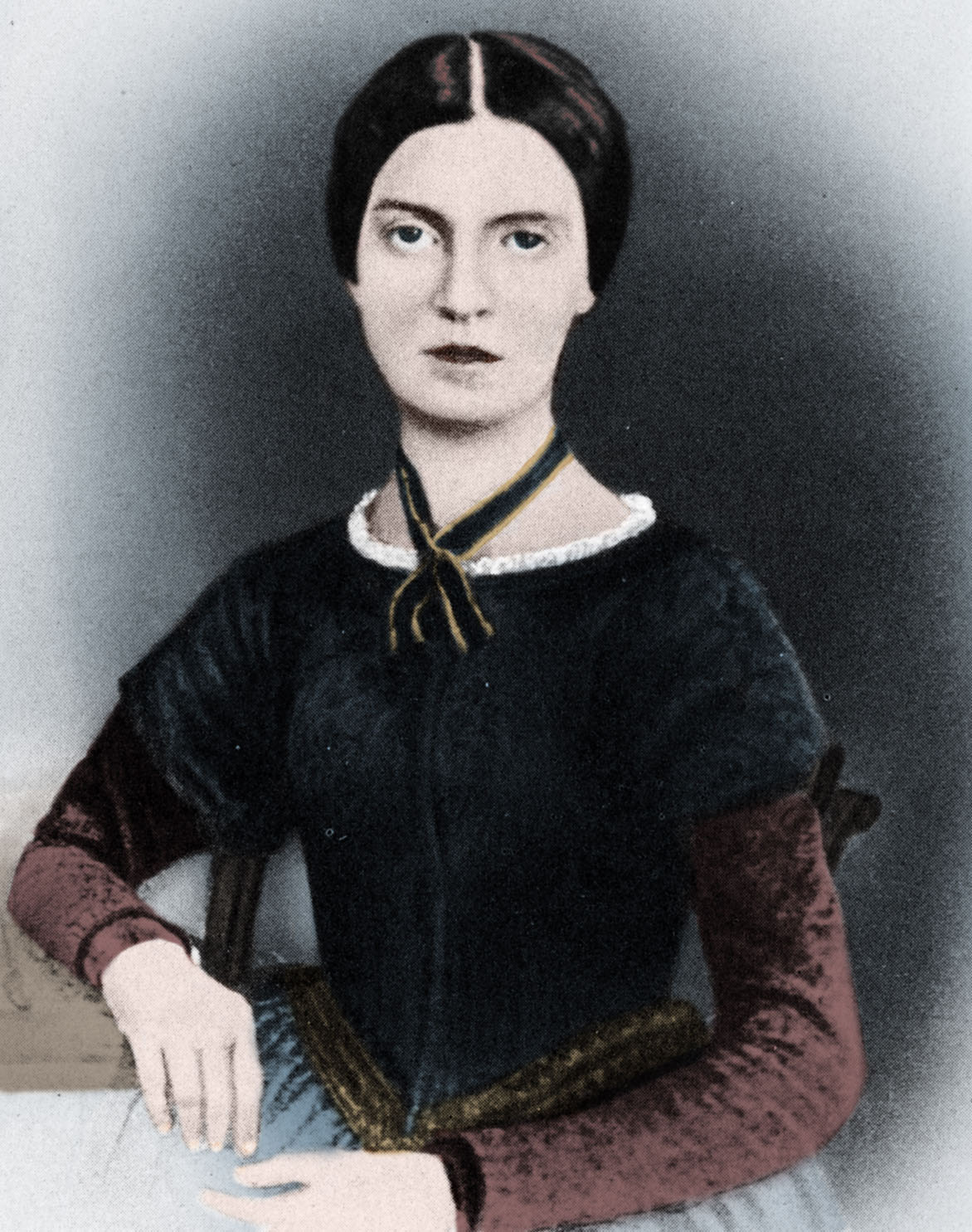- Home |
- Search Results |
- Was Emily Dickinson the first Instapoet?
Was Emily Dickinson the first Instapoet?
She was a notorious recluse who barely published a word in her lifetime, so a new TV drama reimagining Dickinson as an outgoing ‘millennial hero’ is sure to make poetry snobs scoff. But take a closer look at her work, argues John Self, and the idea is not as ridiculous as it first seems.

This month a trailer was released for a new drama based on the life of the poet Emily Dickinson - or as Apple TV puts it, “an unexpected hero for our millennial era.” The show, titled simply Dickinson, looks to have been made in achingly hipster fashion, with hyperactive editing and a soundtrack of Carnage’s ‘I Like Tuh’. It’s already making Sofia Coppola’s Marie Antoinette look like a fly-on-the-wall documentary.
In truth, during her life Emily Dickinson had very little talent for the sort of sociability, sass and self-promotion that buzzes through the Dickinson trailer. She rarely left her hometown of Amherst, Massachusetts, finally becoming a recluse in her father’s house. 'I don’t go from home, unless emergency leads me by the hand', she wrote aged 24; after this she lived for another 31 years. Townsfolk spoke of her as “the Myth”.
'Presented bare on the page her poems have appearance of Instapoetry: a unit of thought held in white space'
Just a handful of her poems had been published at the time of her death in 1886. It was only afterwards that her family discovered her vast unpublished output. The scale was extraordinary: her Complete Poems is an 800-page brick containing 1,775 individual poems.
So why does Apple’s trailer make her look like an out-of-town hustler who’s just crashed a poetry slam, or an Instapoet, performative and idiosyncratic, whose output is as much about image as it is content? Instapoetry is that short affirmatory verse posted on social media, the best-known proponent of which is probably Rupi Kaur, who has 3.7 million followers on Instagram and alternates posts of her poems with fashion shots (she shares a stylist with Selena Gomez).
Maybe the idea of Dickinson as the world’s first Instapoet is not entirely off the mark. The visual component is there: her poems are short and clean, simple in form and structure. Presented bare on the page they have the appearance of Instapoetry: a unit of thought held in white space, closed, entire.
The difference is that the appeal of Rupi Kaur and her peers is in the instant delivery of meaning to the reader: each poem can, in both a visual and literary sense, be seen all at once. But Dickinson’s poems, even when accessible on the surface, continue to surprise on every reading. They are hymns, puzzles, clockwork toys, the words precise but ambiguous. Here she is on the process of grief in 1862 poem After Great Pain, A Formal Feeling Comes:

After great pain, a formal feeling comes—
The Nerves sit ceremonious, like Tombs—
The stiff Heart questions ‘was it He, that bore’,
And ‘Yesterday, or Centuries before’?
The Feet, mechanical, go round—
A Wooden way
Of Ground, or Air, or Ought—
Regardless grown,
A Quartz contentment, like a stone—
This is the Hour of Lead—
Remembered, if outlived,
As Freezing persons, recollect the Snow—
First—Chill—then Stupor—then the letting go—
The first thing that leaps out at the reader are the dashes that punctuate her lines: they render the words dramatic but provisional, and contribute to what Ted Hughes called 'the wonderfully naked voltage of the poems'.
Instapoetry, on the other hand, requires immediate clarity, otherwise the reader will scroll along to the next one. It draws on its own readers: the poet knows which poems get the most likes and comments, and can tailor future writing to amplify the effect. It is, ultimately, self-promotion. But art cannot progress by focus group, and Dickinson’s entire output was written with no knowledge at all of what readers would make of it.
'You could say Dickinson’s self-imposed isolation from the world actually enhanced the strange force of her poetry'
Indeed you could say Dickinson’s self-imposed isolation from the world actually enhanced the strange force of her poetry: the mental energy bottled up had to come out somewhere. The Apple TV trailer shows our difficulty, in the age of social media, in understanding that the life is not the work, that Dickinson could create poetry of unsurpassed brilliance without caring to be celebrated for it in her lifetime. She instead conformed to Flaubert’s rule: to 'be settled and ordinary in your life, so that you may be violent and original in your work.' The modern approach of Instapoets - public, present, performing - would have doused the internal fire that makes Dickinson’s work unique.
But the Apple show could be worthwhile in some ways. Its anarchic spirit may be a good representation of Dickinson’s oddness, her refusal to fit. Perhaps the shot of her performing in a circus is intended not literally, but to show her frustrated emotions when in 1866 she wrote in a letter: 'Friday I tasted life. It was a vast morsel. A circus passed the house - still I feel the red in my mind.'
And it doesn’t matter anyway: while Apple TV’s Dickinson will probably be forgotten before too long, Dickinson herself will not, and if the show provides even a distorted porthole through which newcomers can peep at her poetry for the first time - and understand what she meant when she wrote 'if I feel physically as if the top of my head were taken off, I know that is poetry' - then it will have been worthwhile.